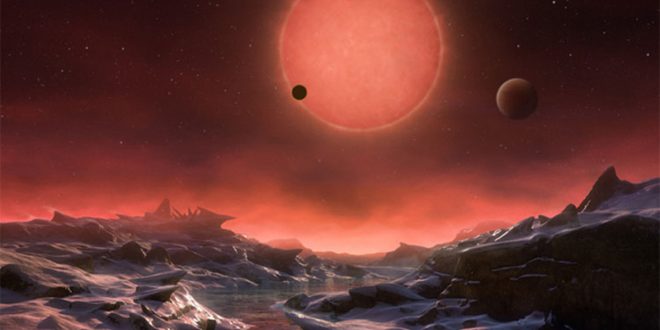Seven earth-sized rocky planets in one fell swoop and all of them are potentially habitable you say? Not so fast.
Harvard researchers have taken this a step further, looking at the newly discovered Trappist-1 solar system, which could have seven Earth-like planets.
The planets orbit a star similar to our Sun at just the right distance for it not to be too hot or too cold for life to blossom.
And scientists believe that if life DOES exist on Trappist-1, it is very likely to have spread across all seven exo-planets.
Manasvi Lingam and Abraham Loeb created a model that could estimate the likelihood of contamination, also known as panspermia.
In a study published on Arxiv, they write: “We present a simple model for estimating the probability of interplanetary panspermia in the recently discovered system of seven planets orbiting the ultracool dwarf star TRAPPIST-1, and find that panspermia is potentially orders of magnitude more likely to occur in the TRAPPIST-1 system compared to the Earth-to-Mars case.
“As a consequence, we argue that the probability of abiogenesis is greatly enhanced on the TRAPPIST-1 planets compared to the Solar system.
“By adopting models from theoretical ecology, we show that the number of species transferred and the number of life-bearing planets is also likely to be higher, because of the increased rates of immigration.
“We propose observational metrics for evaluating whether life was initiated by panspermia on multiple planets in the TRAPPIST-1 system. These results are also applicable to habitable exoplanets and exomoons in other planetary systems.”
The world was stunned when Nasa announced it had found seven Earth-like planets orbiting a star.
At least three of the planets are at just the right temperature to be covered with oceans, and there could be liquid water on the others too – vital for life as we know it.
The Hubble Space Telescope is already searching for atmospheres around the planets as a first step to check them out for clues that they are inhabited.
Agencies/Canadajournal
 Canada Journal – News of the World Articles and videos to bring you the biggest Canadian news stories from across the country every day
Canada Journal – News of the World Articles and videos to bring you the biggest Canadian news stories from across the country every day



